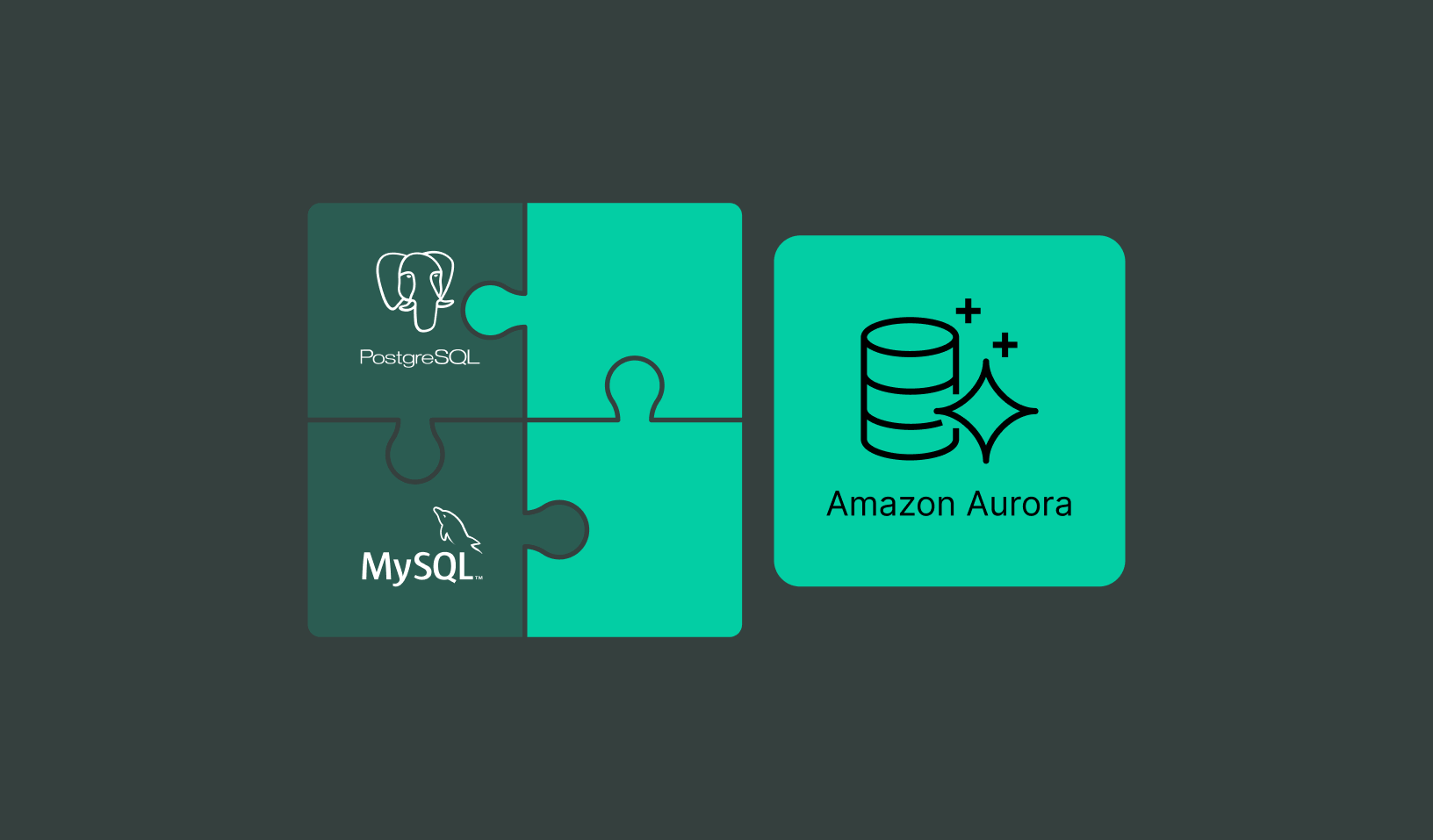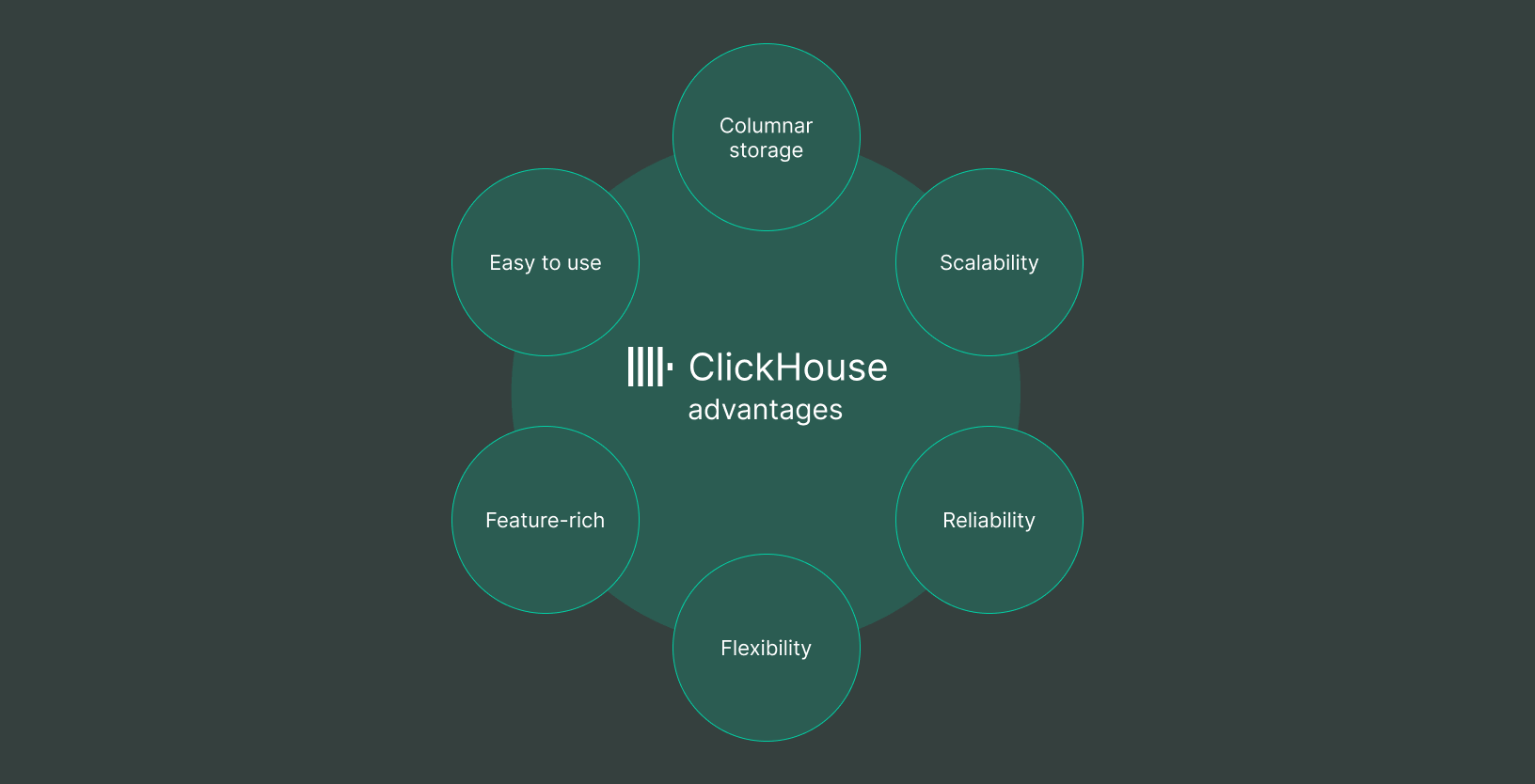
Real-time analytics: Which database reigns supreme - ClickHouse or Aurora?
In the ever-evolving world of data analytics, real-time processing has become critical for businesses seeking to make informed decisions quickly. Two prominent databases that have gained significant attention for their real-time analytics and scalability capabilities are ClickHouse and Aurora.
This comparison aims to provide a comprehensive understanding of both subjects, allowing for informed decision-making or a deeper appreciation of their respective characteristics.
What are ClickHouse and Aurora?
ClickHouse and Aurora are database management systems that offer high-performance and scalable solutions that store and analyze large volumes of data. ClickHouse is an open-source columnar database developed by Yandex and explicitly designed for OLAP (Online Analytical Processing) workloads.
On the other hand, Aurora is a relational database service made by Amazon Web Services (AWS). It is compatible with MySQL and PostgreSQL and offers features like automatic scaling, high availability, and fault tolerance.
ClickHouse and Aurora can be used in the e-commerce, finance, and telecommunications industries for their speed and efficiency. ClickHouse can handle difficult analytical queries on huge datasets. This makes it an ideal choice for data warehousing and business intelligence applications.
On the contrary, Aurora’s compatibility with popular relational database systems and seamless integration with the AWS ecosystem make it a preferred option for transactional workloads with high availability requirements. This concludes that the choice between ClickHouse and Aurora depends on the specific needs and priorities of the organization.

ClickHouse vs. Aurora: Comparison table
|
Difference |
ClickHouse |
Aurora |
|
License |
Open-source |
Proprietary |
|
Market Segments |
Widely used in big data and analytics |
Suitable for various business sectors |
|
Query Language |
SQL-based |
SQL-based |
|
Architecture and Design |
Columnar storage with distributed design |
Row-based storage with distributed design |
|
Analytical workloads |
Well-suited for analytical queries |
Suitable for both OLTP and analytics |
|
Performance |
Exceptional performance for analytics |
High-performance for OLTP, good performance for analytics |
|
Scalability |
Highly scalable both horizontally & vertically |
Highly scalable horizontally |
|
Stability |
Generally stable and reliable, extremely fault tolerant when failing parts of the cluster |
Proven stability as an AWS managed service |
|
Data Consistency |
Strong data consistency guarantees |
Strong data consistency guarantees |
|
Data Manipulation |
Suitable for read-intensive operations and insert heavy |
Balanced for read and write operations |
|
Support |
Good community support and active development |
AWS professional support and resources |
|
Availability and Maintenance |
Requires manual setup and maintenance |
Fully managed service by AWS |
|
Use Cases |
Time-series data analysis, log processing, clickstream analysis |
Versatile applications and databases |
|
Cost |
Cost-effective as open-source |
Incurs AWS service charges based on usage |
|
Data Partitioning |
Supports data partitioning for performance |
Supports data partitioning for scaling |
|
Replication |
Multi-node replication for data redundancy |
Replication across Availability Zones |
|
Data Ingestion |
Efficient data ingestion with high speed |
Efficient data ingestion with high speed |
|
Backup and Restore |
Backup and restore capabilities available |
Automatic backups and restores by AWS |
|
JSON Support |
Supports JSON data format |
Supports JSON data format |
|
Speed |
High query and processing speed |
High-speed data retrieval and queries |
|
Query Performance |
Fast query execution for analytical queries |
Efficient query performance for OLTP |
|
Data Types |
Rich data type support for analytics |
Standard data type support |
|
Secondary Indexes |
Supports several types of secondary indexes |
Supports secondary indexes |
|
In-memory Capabilities |
Limited in-memory capabilities |
Utilizes memory caching for performance |
|
Community |
Active open-source community |
AWS support and community |
|
Installation |
Manual installation and setup required |
Easy setup through AWS services |
What you should think about when choosing the right database
The largest performance bottleneck in an application is often the database. Making the appropriate decision for your application’s database is essential since these choices are difficult to make after they are in production. Understanding your alternatives is critical to choosing the best course of action.
When choosing the right database for your needs, several factors must be considered. Firstly, consider the scalability and performance requirements of your application. ClickHouse Database may be a suitable choice if you deal with large volumes of data and require a fast query response time or if you require real-time analytics and monitoring capabilities. On the other hand if you need to update your transaction regularly and analytics is only the second important part of your application then Aurora Database might be a better fit. It is built for high availability and can replicate near-instantaneous data across multiple availability zones.
However, suppose you are looking for a database that excels in analyzing large volumes of data for business intelligence purposes. In that case, real-time analytics for monitoring and decision-making, as well as log analytics and clickstream analysis, then ClickHouse should be your top choice. Its capabilities in handling these use cases make it the ideal option for your needs.
According to benchmarks, ClickHouse has been proven to handle petabytes of data and perform complex analytical queries with sub-second response times. In one case study, a company reported that ClickHouse allowed them to process over 1 trillion rows of data daily for their real-time analytics needs.

Why ClickHouse is the ultimate choice for scalable analytics workloads?
ClickHouse is a column-oriented database that is designed to handle real-time analytics workloads with remarkable speed. It is the ultimate choice for scalable analytics workloads due to the following reasons:
Columnar storage: ClickHouse’s columnar storage architecture allows for the efficient processing of large volumes of data, making it ideal for big data analytics workloads.
Scalability: ClickHouse scales efficiently with hardware resources horizontally and vertically to the petabyte scale. It can handle large volumes of data and process analytical queries faster than traditional row and column-oriented systems.
Reliability: ClickHouse supports asynchronous replication and can be deployed across multiple data centers, making it highly reliable.
Flexibility: ClickHouse supports shared-nothing clusters and separation of storage and computing, providing a flexible architecture for big data analytics workloads.
Feature-rich: ClickHouse is the most complete analytical database supporting joins, federated queries, and more.
Easy to use: ClickHouse simplifies writing queries with a user-friendly SQL dialect optimized for common analytical use cases. It has built-in integration to nearly every existing file transfer format (like JSON, parquet, CSV, afro.), making data ingestion as easy as it could be.
ClickHouse’s performance and scalability make it ideal for real-time analytics workloads, such as web and app analytics, e-commerce and finance, time series, advertising networks, and information security.
Additionally, ClickHouse’s superior data compression and support for real-time analytical capabilities make it a popular choice for users who need to move workloads from Redshift or BigQuery to ClickHouse.
How DoubleCloud helps you with ClickHouse?
DoubleCloud offers ClickHouse as a service, providing you with a cloud-based solution for your data analytics needs. With DoubleCloud, you can easily set up and manage your ClickHouse database, taking advantage of its high performance and scalability.
Additionally, we provide near-instantaneous data replication across multiple availability zones to ensure your data is always available and accessible.
DoubleCloud offers built-in data transfer capabilities, allowing users to ingest data from external sources such as MySQL, PostgreSQL, Facebook or Google ad platforms. We also provide a free BI tool for creating dashboards, enabling users to visualize their data effectively. We handle the management part, including the setup and scaling of the clusters, while users stay in control of their data
Whether you need real-time analytics for monitoring and decision-making or log analytics and clickstream analysis, DoubleCloud’s ClickHouse service can help you achieve your goals efficiently and effectively.
Final words
While Amazon Aurora and ClickHouse offer robust database solutions, their strengths lie in different areas. If you prioritize high availability and OLTP workloads across multiple availability zones, Aurora is the way to go.
However, if your focus is on advanced analytics and real-time monitoring for business intelligence purposes, ClickHouse is the superior choice. Ultimately, the decision should be based on your individual needs and requirements.
Last but not least, ClickHouse can natively connect to other databases like MySQL or Postgres on query time, giving you the opportunity to just use both technologies for their separate strength.

DoubleCloud Managed Service for ClickHouse
An open-source, managed ClickHouse DBMS service for sub-second analytics. Don’t take two days to set up a new data cluster. Do it with us in five minutes.
Frequently asked questions (FAQ)
How do ClickHouse and Aurora integrate with other technologies?
How do ClickHouse and Aurora integrate with other technologies?
ClickHouse integrates seamlessly with various data analysis and visualization tools commonly used in the big data ecosystem. It supports integrations with popular BI tools, data connectors, and frameworks like Apache Kafka and Apache Spark, as well as a great variety of direct connections like RestAPIs, MySQL, S3 etc.
On the other hand, Aurora, being an AWS-managed service, offers native integration with other AWS services, enabling easy data exchange and synchronization within the AWS ecosystem.
What are the primary differences between ClickHouse and Aurora databases?
What are the primary differences between ClickHouse and Aurora databases?
What are the use cases for ClickHouse and Aurora?
What are the use cases for ClickHouse and Aurora?
Start your trial today



